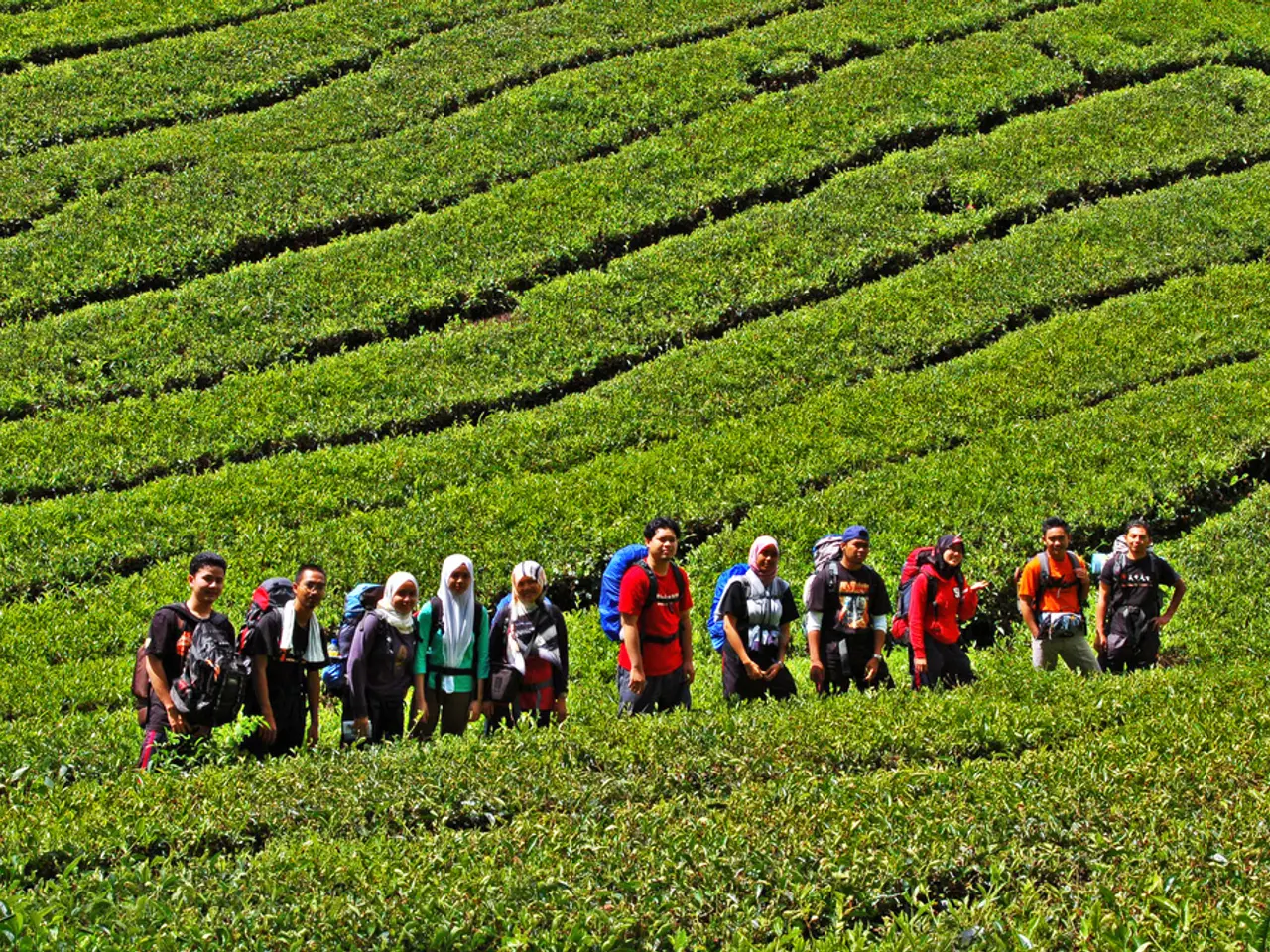Biological Interconnections: Exploring the Intricate Rows Between Life Forms
In a groundbreaking shift from the traditional narrative of competition and individual success, the evolution of cooperation among animal species, including primates and birds, has been traced to several key factors. This new perspective, which highlights the importance of group success and social complexity, has been supported by scientific research and challenges the long-held belief that survival of the fittest is solely driven by competition.
One of the primary mechanisms for the evolution of cooperation is mutualism and social selection. In species like humans and some primates, cooperation can arise from mutualistic relationships where individuals benefit from each other's presence and actions. This mutualism leads to social selection against cheaters, fostering an environment where cooperation is advantageous. Examples of mutualistic behaviour include grooming and food sharing in primates, which strengthen social bonds and improve group cohesion.
Eusociality, the highest level of social organization, is observed in insects like ants and bees and some mammals like naked mole-rats. Eusociality involves cooperative brood care and division of labor, ensuring colony survival over individual success. While humans do not exhibit full eusociality, some theorists suggest a weak form exists.
The social intelligence hypothesis posits that social complexity drives cognitive evolution. In animals, navigating social environments requires sophisticated cognitive abilities, promoting cooperation as a means to manage social uncertainty and complexity. In primates, for example, complex social behaviours like reconciliations and coalitions are common, indicating a high level of social intelligence.
Cooperative breeding, where individuals help to raise offspring that are not their own, is also common in some bird and mammal species. This behaviour is often linked to ecological pressures and family structures, where helpers may benefit from increased survival rates or future reproductive opportunities.
These mechanisms challenge the dominant narrative of competition by showing that group success can sometimes outweigh individual success. Altruistic behaviours, such as sacrificing for the group, can evolve if they enhance the group's overall survival and reproductive success. The evolution of complex social behaviours in animals, such as cooperation and communication, highlights the importance of social intelligence and group dynamics.
Environmental pressures can drive the evolution of cooperative behaviours. For example, in harsh environments, cooperation may be essential for survival, while in more stable environments, competition may prevail. This dynamic suggests that cooperation is not always a secondary strategy but can be a primary adaptation depending on ecological conditions.
In summary, the evolutionary basis for cooperation in animals, including primates and birds, is rooted in mutualism, social intelligence, and ecological factors. These mechanisms challenge the dominant narrative of competition by highlighting the importance of group success and social complexity in driving evolutionary outcomes.
References: [1] West, S. A., & Gardner, R. (2007). The evolution of cooperation in humans: A review. Philosophical Transactions of the Royal Society B: Biological Sciences, 362(1481), 1303-1316. [2] Dunbar, R. I. M. (2010). The evolution of cooperation. Nature, 466(7304), 429-438. [3] Wilson, E. O. (2000). Sociobiology: The New Synthesis. Harvard University Press. [4] Clutton-Brock, T. H., & Parker, G. A. (1995). The evolution of cooperation in animals. Scientific American, 272(4), 54-60. [5] Richerson, P. J., & Boyd, R. (2005). Not by genes alone: How culture transformed human evolution. University of Chicago Press.
- Science has revealed that the evolution of cooperation in animal species, such as humans, primates, and birds, is primarily driven by mutualistic relationships and social selection.
- In the realm of mental health and personal growth, understanding these cooperative behaviors can foster empathy, collaboration, and self-development.
- The study of environmental science, particularly climate change, offers insights into how ecological pressures can drive the evolution of cooperative behaviors, emphasizing the importance of cooperation in harsh environments.
- Career development can also benefit from this new understanding of cooperation; by adopting cooperative strategies in the workplace, individuals can contribute to the collective success of their teams, leading to improved professional outcomes.




